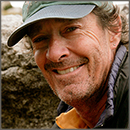Robert Glenn Ketchum CRNRA
Robert Glenn Ketchum – Chattahoochee River Commission 1985
36 Original Cibachrome Prints
6 images 30 x 40 Framed
6 images 30 x 40 Matted
12 images 24 x 30 Matted
12 images 16 x 20 Matted
This body of work was commissioned by Tom Cousins in the mid 1980’s to document the Chattahoochee River in and around the “Wildwood” area where Cousins Properties was actively developing office complexes. The work has been displayed at various times during the following 30 years within the Cousins Properties executive offices. The photographer, Robert Glenn Ketchum, has a long and distinguished career as a champion of environmental activism (select BIO tab above for more complete information).
Please contact Tony Casadonte at 404-261-6100, 404-234-4364 (text/cell) or (tony.c@lumieregallery.net) to purchase or with any questions.
This custom page is not accessible from the gallery web site, to access in the future please access the link in your original e-mail.
Robert Glenn Ketchum (1947) For 40 years Robert Glenn Ketchum’s imagery and books have helped to define contemporary color photography while at the same time addressing critical national environmental issues, and have made him one of the most successful artist/activists in American history. As an undergraduate at UCLA, Ketchum studied with Edmund Teske and Robert Heinecken. His first published photographs were of 1960’s era rock bands, including The Doors, Cream, Jimi Hendrix, Donovan and Traffic. Mentoring with Leland Rice during post-graduate work at California Institute of the Arts (MFA, ’74), Ketchum expanded his discipline from black & white to color and began to focus on the natural world and the legislative policies that manipulate it. What has transpired since is a notable legacy to both art and nature. Ketchum and close friend, master printer Michael Wilder, pioneered Cibachrome color printmaking in the early 1970’s.
They were also among the first contemporary photographers to explore print scale. The distinctive prints are in numerous collections including the Museum of Modern Art (NY), the National Museum of American Art (DC), the Museum of Contemporary Art, Los Angeles, and the Metropolitan Museum of Art (NY), to name a few. Significant archives (more than 100 images) have been acquired by the Amon Carter Museum (TX) and the Huntington Library (CA), and substantial bodies of work can be found at the High Museum in Atlanta, the Los Angeles County Museum of Art, the Akron Art Museum (OH), Stanford University Art Museum (CA), the Herbert F. Johnson Museum of Cornell University (NY), and the National Museum of American Art. As a curator and author, Ketchum has published with Abrams, Viking, and has 7 individual titles with Aperture. Prior to his emergence as a photographer, he was a widely recognized curator, discovering the Paul Outerbridge, Jr. estate, bringing recognition to the overlooked work of James Van Der Zee, and authoring the historical classic, American Photographers and the National Parks. Since publication of this last title, he has concentrated primarily on his own politically focused projects and publications such as The Tongass: Alaska’s Vanishing Rain Forest (Aperture, NY, 1986).
He is perhaps most recognized for his work in the Tongass, which is credited with helping to pass the Tongass Timber Reform Bill of 1990. This significant legislation established 5 major wilderness areas and simultaneously protected more than one million acres of old-growth trees in the largest temperate rainforest in the world. Ketchum’s work has been similarly integral to many other diverse environmental struggles including the development of a Hudson River Greenway from the Adirondacks to Manhattan; the enlargement of Saguaro National Park and mitigation of neighboring resort developments; the acquisition of World Biosphere status for the Tatshenshini River corridor, Canada and the U.S. (2 million acres); the defense of one of the great whale nurseries in San Ignacio Lagoon (Baja) from industrial development by Mitsubishi; creating three new state parks in California; guiding the future planning of “gateway communities” – cities and towns that lie adjacent the entrance to national parks; several scathing critiques of federal land management policies (Overlooked in America: The Success and Failure of Federal Land Management and Clearcut: The Tragedy of Industrial Forestry); popularizing the Arctic and its beauty to underscore the threat to it from global warming; and, contributing to an internet library of images and scientific information about Russia’s wild biological reserves. Most recently he has been part of the largest land conservancy negotiation in the history of California, purchasing the conservation easements to the entirety (83,000 acres) of San Simeon Ranch, the well known William Randolph Hearst estate, for which he is the exclusive photographer. American Photo magazine named Ketchum one of the 100 most important people in photography, and Audubon placed him among the 100 people “who shaped the environmental movement of the 20th Century.” Other acknowledgments suggest the breadth that the imprint of his work has had: the United Nations Outstanding Environmental Achievement Award; the Josephine and Frank Duveneck Humanitarian Award; the Robert O. Easton Award for Environmental Stewardship; the UCLA Alumni Award for Excellence in Professional Achievement; the Ansel Adams Award for Conservation Photography; and Outstanding Photographer of the Year (2001) from the North American Nature Photography Association.
Aside from his commitment to his art, Ketchum has had a lifelong dedication to public service founding Advocacy Arts Foundation and serving as board member or councilor to the Alaska Conservation Foundation, the American Land Conservancy, and the Alaska Wildlife Alliance. Previously, he was Curator of Photography for the National Park Foundation for 15 years, and was a member of the board, vice-president, and president of the formative Los Angeles Center for Photographic Studies during the 1970’s. In the fall of 2006, the Amon Carter Museum of Fort Worth, TX will display a 35-year retrospective of Ketchum’s work, comparing and contrasting his imagery and accomplishments with a large selection of photographs from the Eliot Porter Archive. An extensive publication, Regarding the Land: Robert Glenn Ketchum and the Legacy of Eliot Porter will accompany the exhibition.


